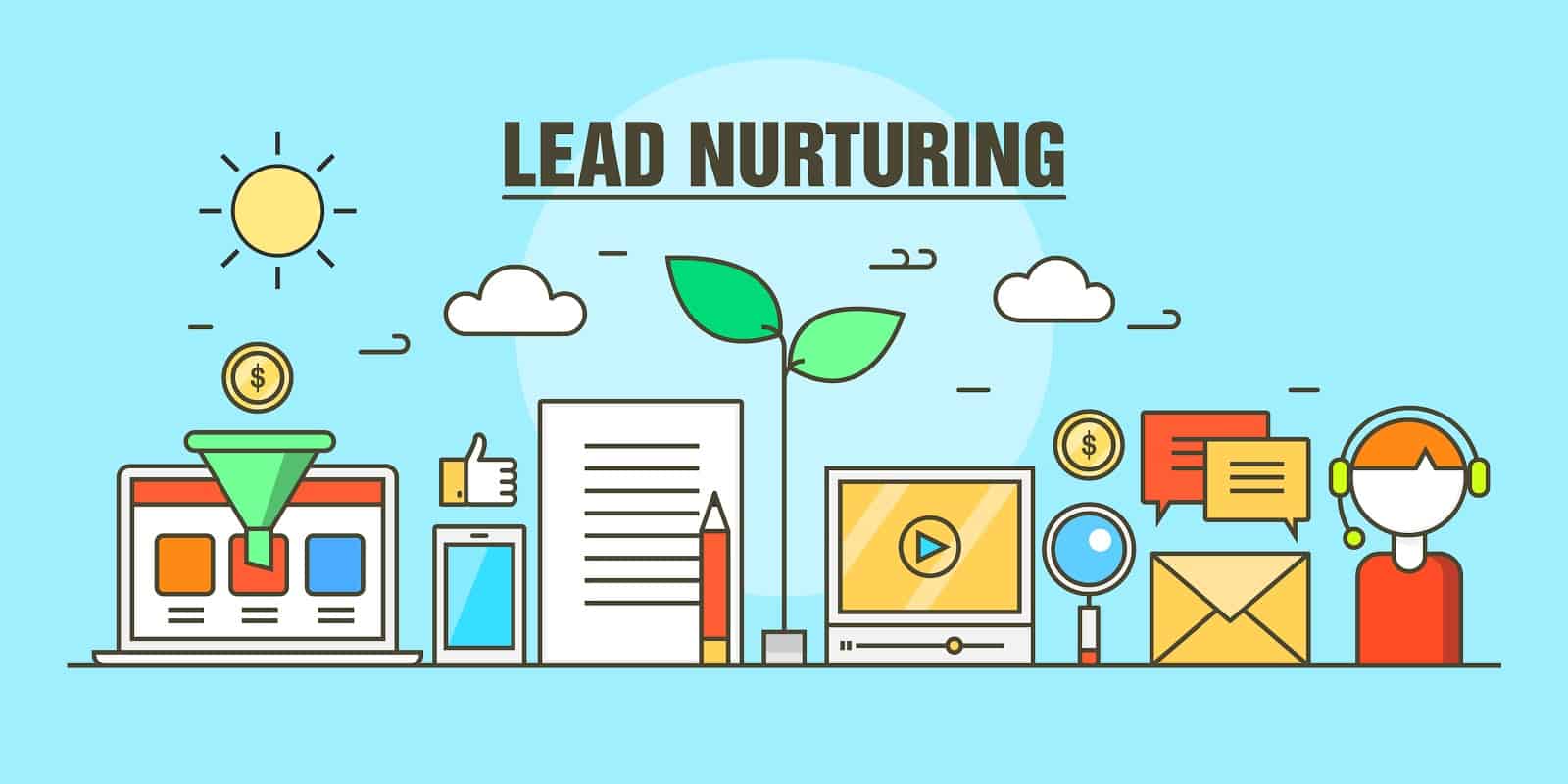What is B2B Lead Nurturing
What is B2B Lead Nurturing?
Lead nurturing is an important method in business-to-business (B2B) marketing for converting potential clients into loyal customers. Unlike business-to-consumer (B2C) transactions, which frequently involve quick decisions and shorter sales cycles, B2B sales processes are typically longer and more complex. This intricacy necessitates a methodical strategy to directing prospects through the sales funnel, ensuring they receive relevant information at the right time. This is when leadership skills come into play.
Understanding B2B Lead Nurturing
B2B lead nurturing refers to the process of building and sustaining relationships with potential customers (leads) throughout the purchasing cycle. The idea is to engage these leads with specialized messages and targeted marketing activities, ultimately leading to a purchase. This entails knowing your prospects’ wants and pain areas and offering them with relevant information to remedy these concerns.
The Importance of B2B Lead Nurturing
1. Longer Sales Cycles: B2B sales cycles are sometimes lengthy, with several decision-makers and complicated negotiations. Lead nurturing keeps your brand top-of-mind throughout the lengthy process.
2. Building Trust and Credibility: By continuously delivering relevant information and addressing your leads’ individual needs, you may gain trust and develop your brand as a reputable authority in your industry.
3. Higher Conversion Rates: Effective lead nurturing increases the likelihood of leads becoming paying customers. Studies show that nurtured leads spend 47% more than non-nurtured leads.
4. Improved Customer Relationships: Lead nurturing allows you to form stronger bonds with your prospects, which can lead to increased customer loyalty and long-term business growth.
Key Components of a B2B Lead Nurturing Strategy
Segmentation
Segmentation is the practice of categorizing your leads based on certain factors such as industry, company size, job type, or stage of the purchasing process. This enables you to tailor your messaging and content to the unique needs and tastes of each segment.
How to Segment Your Leads:
• Use CRM data to segment leads based on demographics and activity.
• Develop buyer personas that represent various parts of your target consumer.
• Keep your segments up to date and adjust them when new data and insights become available.
Personalized Content
Personalization is critical to good lead nurturing. You can better engage your leads and drive them closer to a buying decision by providing content that is tailored to their individual requirements and interests.
Types of Personalized Content:
• Email Campaigns: Use tailored subject lines and content to address each lead’s individual pain points.
• Whitepapers and E-books: Offer in-depth resources that provide significant insights and solutions to the difficulties that your leads encounter.
• Case Studies: Share success stories on how your product or service has benefited other firms in comparable situations.
• Webinars and Videos: Organize live or recorded sessions to provide educational content and demonstrate your skills.
Multi-Channel Engagement
Engaging with your leads across several platforms guarantees that your message reaches them where they are. This applies to email, social media, your website, and even offline mediums.
Effective Multi-Channel Strategies:
• Email Marketing: Use automated email sequences to nurture leads over time while providing relevant content.
• Share quality content and engage with your leads on social networking channels like LinkedIn, Twitter, and Facebook.
• information marketing is the process of publishing blog posts, articles, and other types of information on your website in order to attract and nurture leads.
• Direct Mail: Send personalized letters or packages to high-value leads to create a memorable touchpoint.
Lead Scoring
Lead scoring is the process of assigning numerical points to each lead depending on how they interact with your brand. This helps you to rank leads and focus your efforts on the ones who are most likely to convert.
How to Implement Lead Scoring:
• Set lead scoring criteria, such as website visits, email opens, content downloads, and social media engagement.
• Score each criterion based on its importance and relevance to the purchasing process.
• Use marketing automation tools to track and score leads in real time.
Automation
Marketing automation tools can help you increase lead nurturing by automating repetitive tasks and ensuring timely and consistent communication with your leads.
Benefits of Marketing Automation:
• Improve efficiency by automating email campaigns, social media posts, and other marketing initiatives to save time and resources.
• Consistency: Ensure that your leads receive timely and appropriate content at all stages of their journey.
• Scalability: Your lead nurturing activities can be readily scaled as your company grows and your lead database expands.
Best Practices for B2B Lead Nurturing
Understand Your Audience
The basis of efficient lead nurturing is a thorough grasp of your target audience. Conduct rigorous research to determine their needs, pain spots, and preferences.
How to Understand Your Audience:
• Conduct surveys and interviews with your current clients and leads.
• Analyze data from CRM and marketing automation tools.
• Track social media debates and industry trends.
Create a Content Calendar
A content calendar enables you to plan and organize your lead nurturing activities, ensuring that you distribute the relevant information at the right time.
How to Create a Content Calendar:
• Identify critical stages in the buying process and plan out the material required for each.
• Plan your content development and distribution operations to ensure a consistent flow of information.
• Review and change your content calendar on a regular basis, taking into account performance data and comments.
Test and Optimize
Continuous testing and optimization are crucial for improving the effectiveness of your lead nurturing efforts.
How to Test and Optimize:
• Conduct A/B testing on various marketing components, such as subject lines, email copy, and call-to-action buttons.
• Analyze performance data to determine what works and what doesn’t.
• Make data-driven changes to your plan to boost performance.
Align Sales and Marketing
Successful lead nurturing necessitates strong collaboration between your sales and marketing departments.
How to Align Sales and Marketing:
• Create clear communication lines and schedule regular meetings between the sales and marketing departments.
• Establish shared objectives and KPIs for lead nurturing initiatives.
• Use a unified CRM system so that all teams have access to the same data and insights.
Measure Success
Tracking the effectiveness of your lead nurturing efforts is critical for determining their impact and identifying areas for improvement.
Key Metrics to Track:
• Lead Engagement: Use email open rates, click-through rates, and content downloads to calculate lead engagement.
• Conversion Rates: Calculate the percentage of leads who proceed from one stage of the purchasing process to the next.
• Sales Cycle Length: Determine how long it takes to turn leads into paying customers.
• Revenue Impact: Determine the effect of lead nurturing efforts on overall revenue growth.
B2B lead nurturing is a critical component of any good marketing strategy. By creating and maintaining relationships with your leads through personalized and targeted messages, you can guide them through the purchasing process and increase your chances of turning them into loyal clients. Implementing a solid lead nurturing strategy requires a thorough understanding of your target demographic, the effective use of marketing automation technologies, and close collaboration between sales and marketing departments. By applying the best practices outlined in this article, you may boost your lead nurturing efforts and drive long-term business growth.

